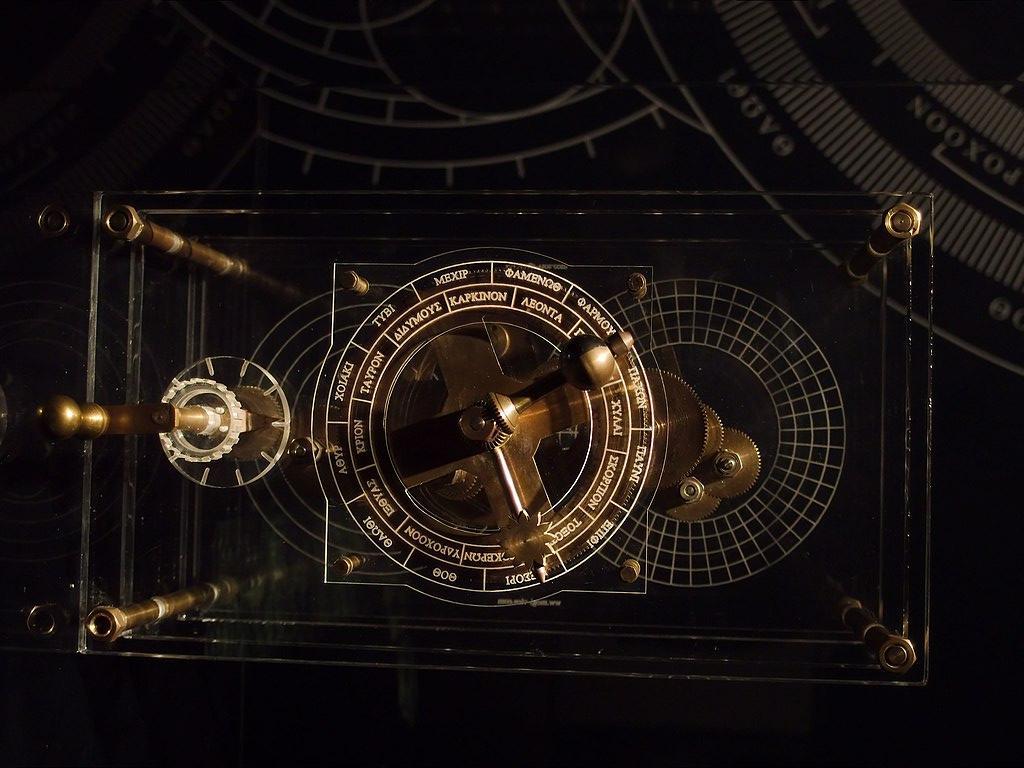Scientists Discover Hidden Computer From Roman Empire – Solved Its Mysterious Secret
Researchers believe they have uncovered the secrets of an ancient artifact known as the Antikythera mechanism. This device has been theorized as the world’s earliest analog computer, enabling ancient inhabitants around the Mediterranean Sea to track the movement of celestial bodies.
Scientists from the esteemed University of Glasgow conducted modern testing on the device and concluded the mysterious artifact allowed individuals of the Greco-Roman era to track the lunar calendar accurately.
The History of Computing
When we think of computers, laptops and smartphones may be the first things that come to mind. These are generally referred to as digital computers, which function by working in binary coding: a system of 1’s and 0’s that uses electrical signals to perform various functions.

Source: Wikimedia
Before digital computers, we had analog computers, which utilize mechanical principles instead of digital maths. A wind-up clock is a good example of a basic analog computer.
The Discovery of the Antikythera Mechanism
Archaeologists once believed that the most basic analog computers, which were used in astronomical clocks, arose around the 13th century.

Source: Wikimedia
However, this was pushed back over 1,000 years following the discovery of a small metallic device found by a crew of sponge divers on the floor of the Mediterranean Ocean near the Greek island of Antikythera in 1901.
Antikythera Mechanism Discovered in Shipwreck
The divers had discovered the remains of a shipwreck that sank below the sea around 2,000 years ago. Among the items were jewelry, decorated pots and vases, and a bronze statue of a philosopher. However, the most fascinating was a small metal device comprising brass gears and dials.

Source: Wikimedia
Archaeologists later dubbed the artifact the Antikythera mechanism. It was inscribed with 2000 letters in Greek, which researchers thought worked as some kind of ancient instruction manual.
Researchers Begin to Solve the Mystery
Despite extensively studying it for over a century following its discovery, researchers were unable to discern what exalt the device was used for. However, as X-ray technology improved, scientists decided to scan the artifact in 2005 and were shocked by its complexity.

Source: Wikimedia
The mechanism comprised around 37 rotating bronze gears of various shapes and sizes. The individual cogs were manufactured precisely to fit in place atop one another, and each had a specific number of teeth corresponding to a prime number.
The World's First Analog Computer
Further inspection revealed that the Antikythera mechanism, held together by a complex system of gears, pins, and rivets, allowed the user to follow the movements of the Sun and the Moon through the zodiac by turning the bronze gears.

Source: Wikimedia
Essentially, researchers concluded that the unique device was the world’s earliest analog computer, as it could be given input that enabled it to calculate the movement of celestial bodies.
New Study Conducted on the Mechanism
In 2020, a new research study conducted by Chris Budiselic and colleagues proposed a slightly alternative theory for the Antikythera mechanism.

Source:
After analyzing newer X-ray images of the artifact, Budiselic’s research suggested that instead of the widely accepted idea that the device was used to track the Egyptian solar calendar, it actually followed the Greek lunar calendar.
Researchers Use Advanced Techniques to Study Antikythera Mechanism
Budiselic’s theory was later backed up by a team of researchers from the University of Glasgow, who published a study using statistical techniques developed for the Laser Interferometer Gravitational-Wave Observatory.

Source: Freepik
Essentially, the researchers employed their technique on the Antikythera mechanism, which enabled them to measure the position and number of holes in the device thought to represent days of the year. This allowed them to predict the placement and number of lost holes.
Mechanism Follows 354-Day Lunar Calendar
The results of their study aligned with Budiselic’s earlier theory, suggesting that the Antikythera mechanism followed the Greek 354-day lunar calendar.

Source: Wikimedia
“Glasgow team’s results provide fresh evidence that one of the components of the Antikythera mechanism was most likely used to track the Greek lunar year,” the researchers said in a statement from the university.
Researchers Express How Impressed They Are With the Antikythera Mechanism
The Glasgow-based team of researchers also expressed their admiration for the creator’s attention to detail. “The precision of the holes’ positioning would have required highly accurate measurement techniques and an incredibly steady hand to punch them,” said study co-author Graham Woan.

Source: Wikimedia
He added, “It’s a neat symmetry that we’ve adapted techniques we use to study the universe today to understand more about a mechanism that helped people keep track of the heavens nearly two millennia ago.”
Researchers Happy With New Study of the Antikythera Mechanism
Andrew Thoeni, a co-author of the earlier paper published back in 2020, praised the new research conducted by the Glaswegian researchers.

Source: Wikimedia
“We are very happy that more scholars are now accepting and validating our findings,” Thoeni told LiveScience in an email.
The Antikythera Mechanism Continues to Amaze Researchers
Diomidis Spinellis, a professor of software engineering at the Athens University of Economics and Business, who had previously worked on the Antikythera mechanism but was not involved in either of the recent papers, shared his opinion on the new research.

Source: Wikimedia
“The Antikythera mechanism is a gift that keeps on giving,” said Spinellis. “Despite its severe corrosion and many missing elements, the application of increasingly sophisticated technologies and innovative cross-disciplinary analysis continues to provide impressive insights into this remarkable artifact.”
